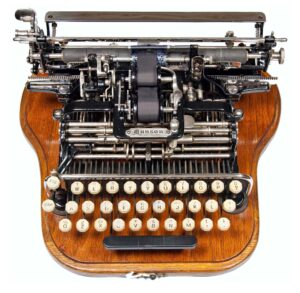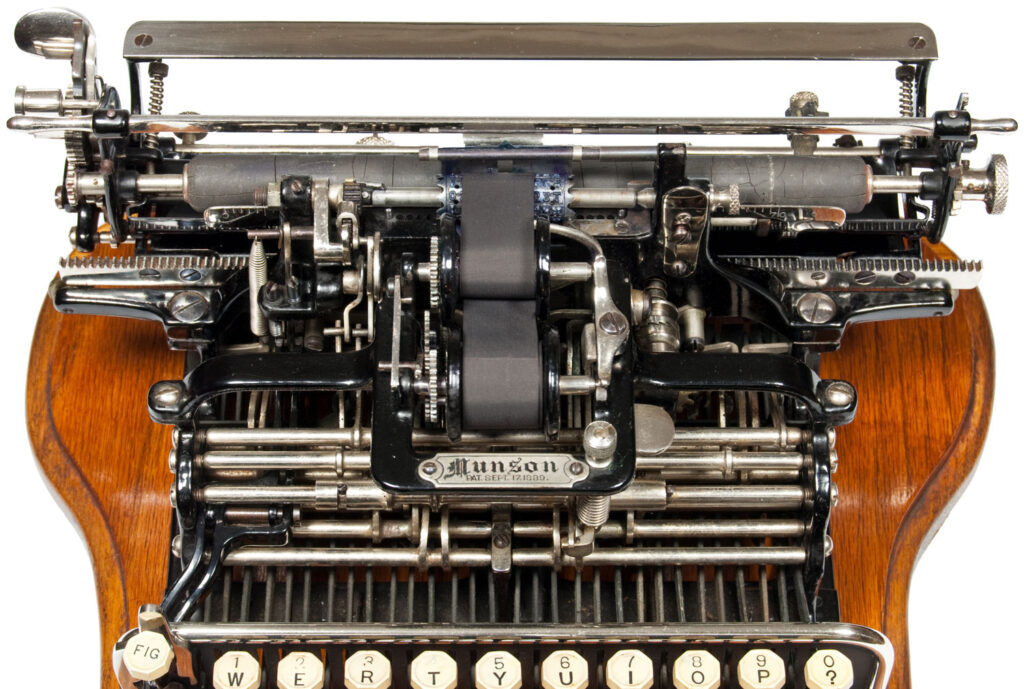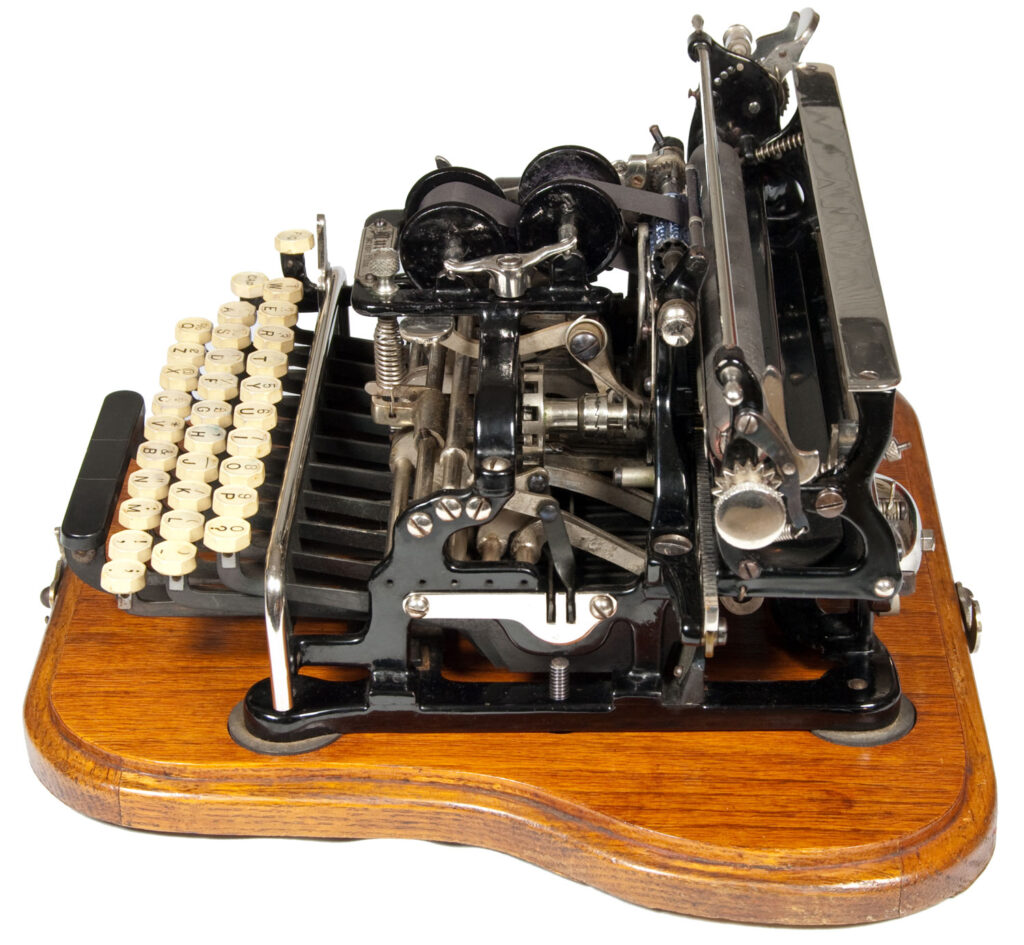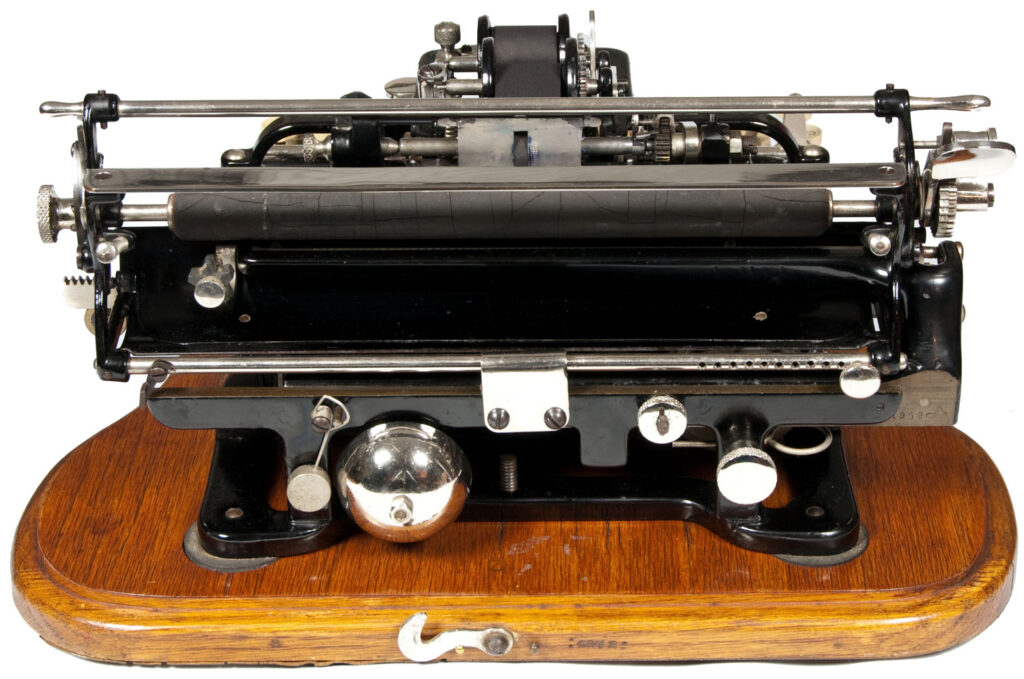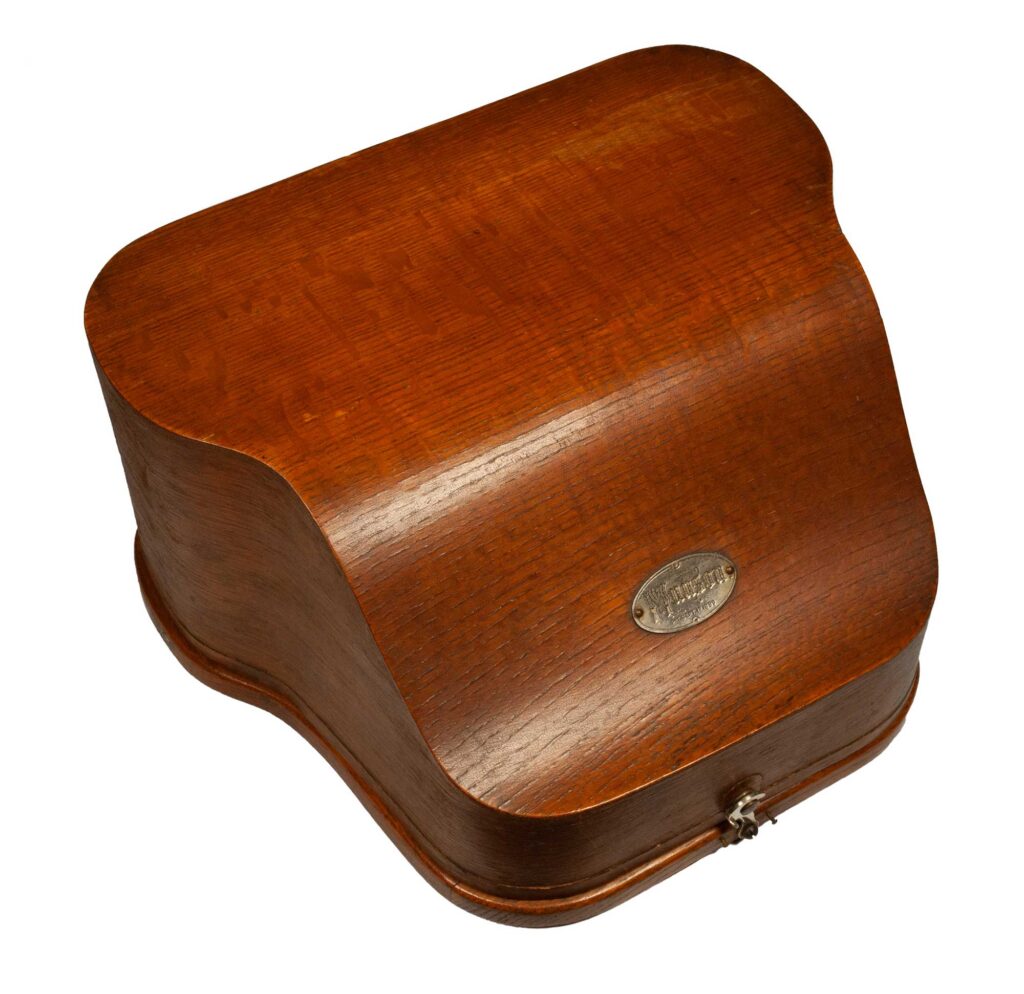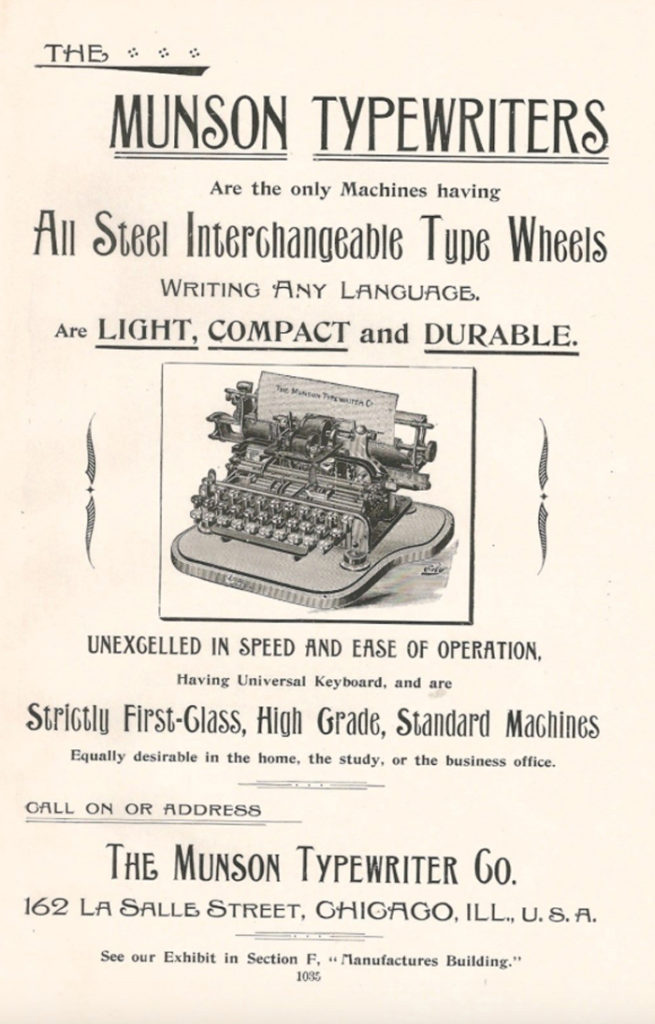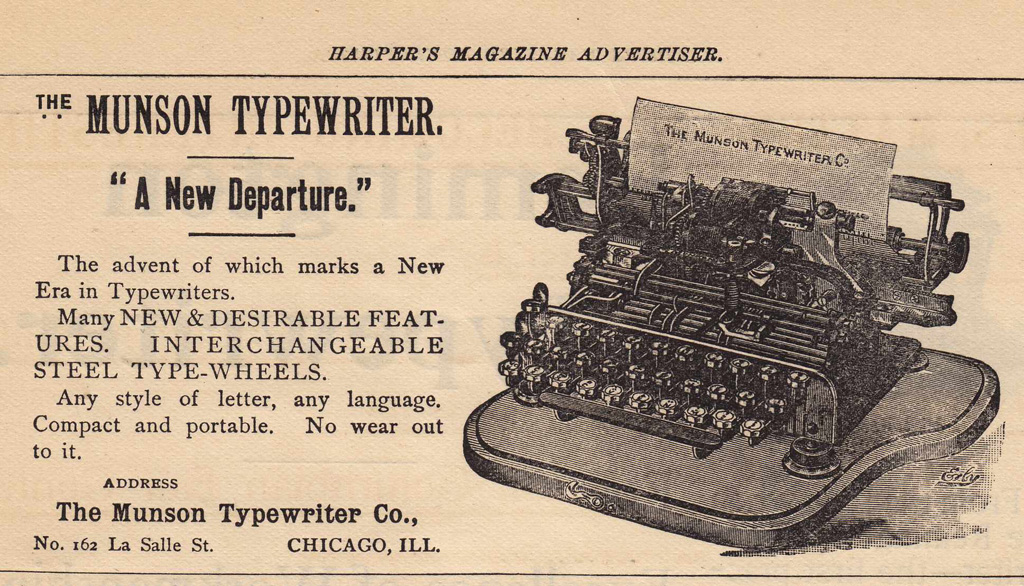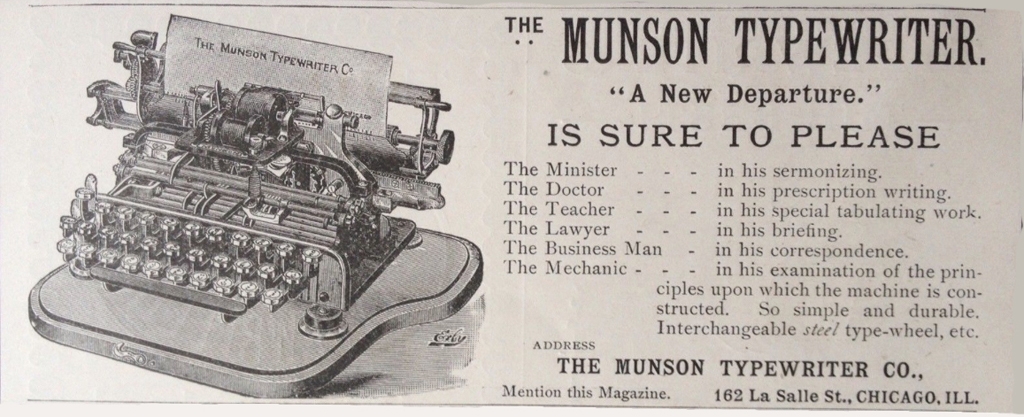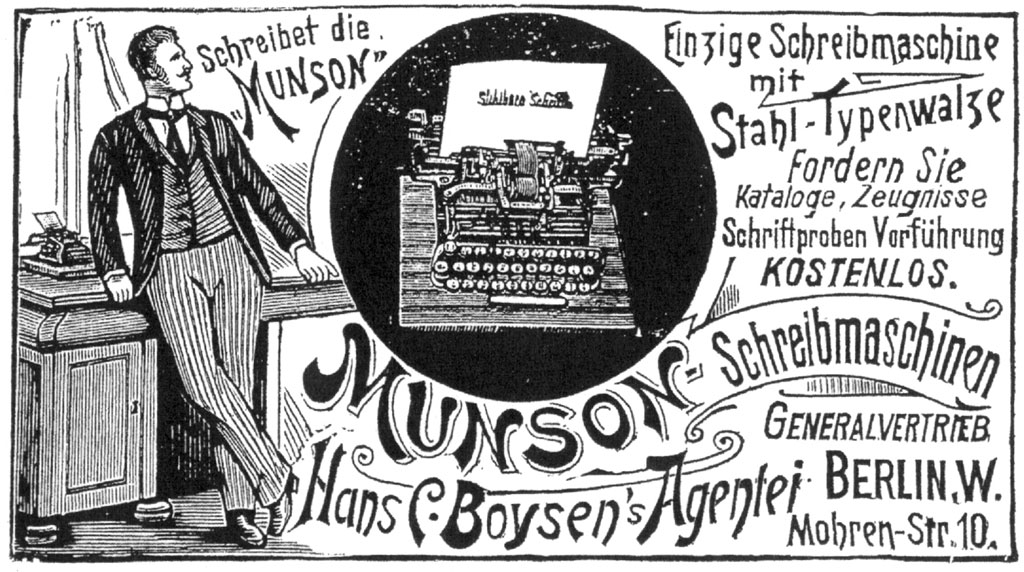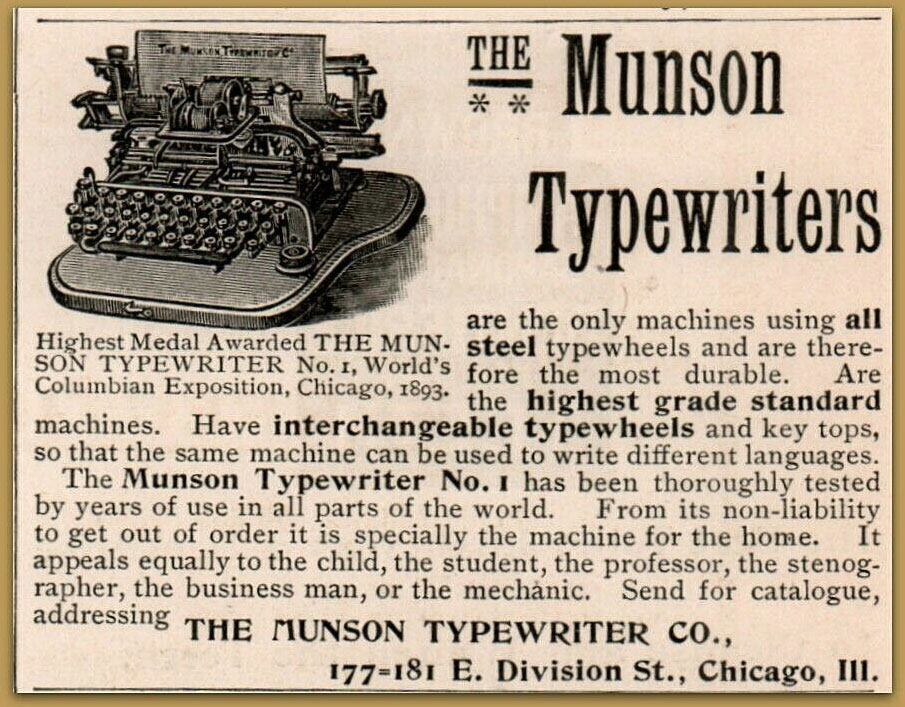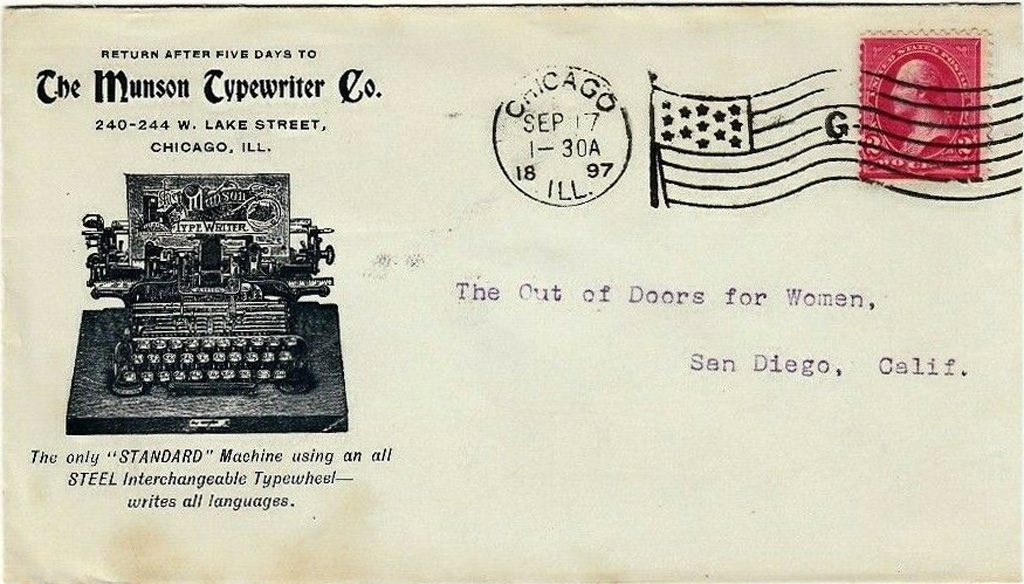The Munson typewriter is a remarkable piece of engineering, featuring a complex and original mechanical design compactly built into a small frame. With much of its inner workings exposed, the machine comes to life when in use, with rods and levers visibly in motion.
Rather than typebars, the Munson employs a horizontal type cylinder, about the size of a finger, that slides side to side and rotates to position the correct character. A hammer then strikes from behind, pushing the paper against the ribbon and type cylinder. Interchangeable type cylinders with various fonts were available and could be easily swapped.
Equipped with two shift keys, one for uppercase, the other for figures, only three rows of keys were needed.
Introduced in 1890, the Munson performed well in the market, though it is difficult to find today. In 1898, the design was acquired and rebranded as the Chicago when production was taken over by The Chicago Writing Machine Co. The Chicago typewriter, with some refinements, is essentially the Munson mechanism enclosed within a handsome cast iron cover.
“Equally adapted to the business man, the stenographer, the lawyer, the minister or the doctor.”
“Highest Medal Awarded, World’s Fair, Chicago, 1893”
“Interchangeable steel type wheel (18 different styles of type)”
